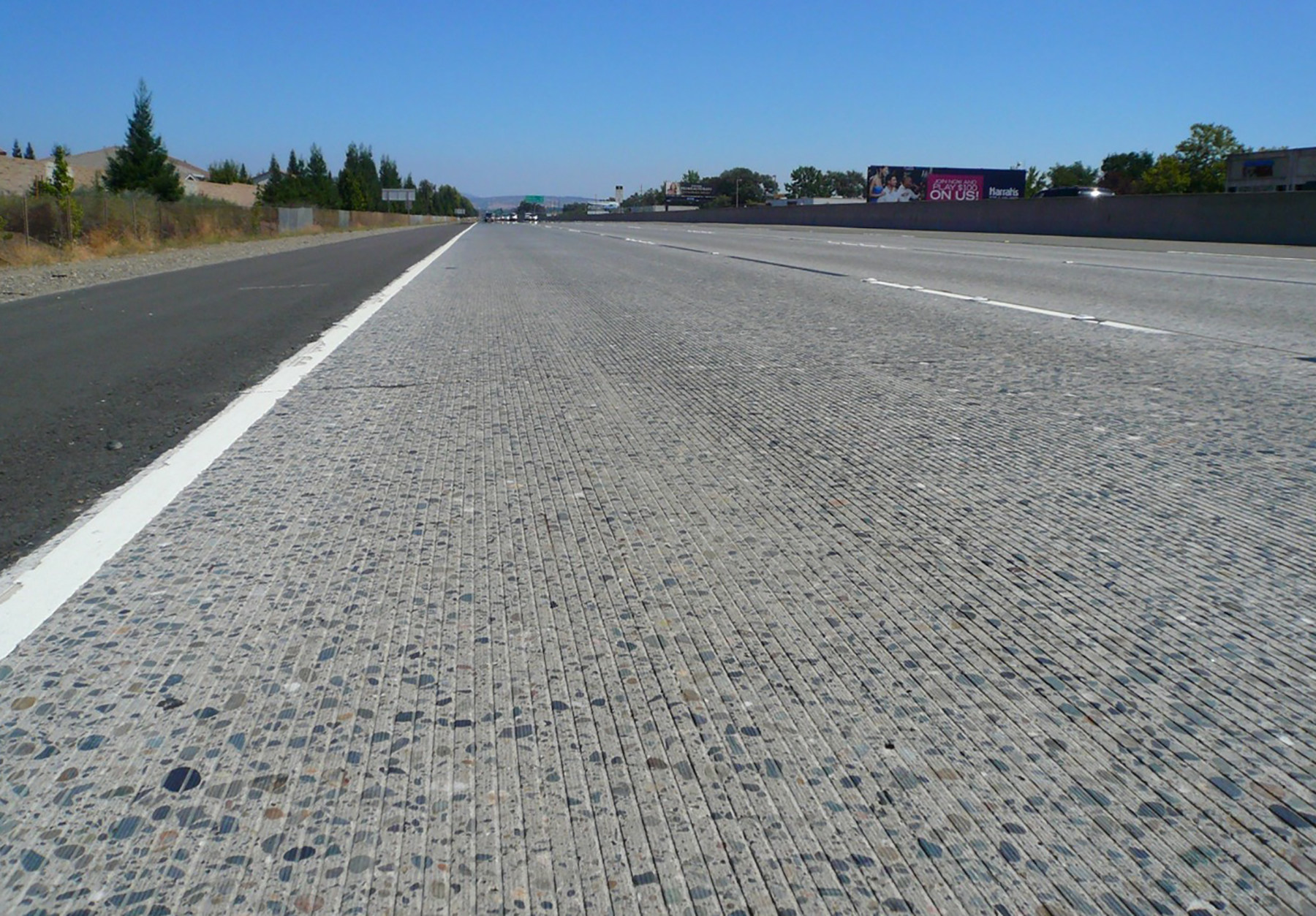On October 31st, the Concrete Smoothness Working Group (WG) completed a report to the Pavement and Materials Partnering Committee (PMPC) on the recently updated Caltrans concrete pavement smoothness specification.
Research, analysis and the creation of the report was done by the Concrete Smoothness Working Group (WG), which is made up of Caltrans and Industry professionals. Dulce Rufino Feldman serves as the Caltrans Chair and Charles Stuart, Executive Director of the Southwest Concrete Pavement Association, is the Industry Lead. Other members of the WG include: Deborah Yost, Caltrans Construction Standards; Reimond Garcia, Caltrans Pavements; Steven Seifert, Caltrans Materials and Testing Services (METS); Nicholas Schaefer, Surface Systems and instruments, Inc. (SSI); Larry Scofield, Internationals Grinding and Grooving Association (IGGA); and Tim Schaftlein, Brosamer Wall.
Though they were not formal members of the Working Group, Jon Hamilton with Granite Construction, as well as Chu Wei and Bob Orthmeyer with the Federal Highway Administration (FHWA), contributed to this work.
The Working Group’s primary role was to review and analyze the new concrete pavement smoothness specification that was first added to projects in 2019. This new specification requires the use of innovative inertial profiler equipment to measure pavement smoothness. Tables have been included in the specification with thresholds that correspond with different types of concrete pavement and project types. Another important change is the adoption of incentives and disincentives for the first time in Caltrans smoothness specifications.
For Caltrans and the traveling public, concrete pavement smoothness continues to be a top priority, with the public rating it as one of the most important factors in rating the roadway. Along with providing a more comfortable ride, smoother pavements reduce fuel usage and maintenance costs. This can be significant when factoring in expected traffic volumes and pavement life. Reduced fuel usage decreases greenhouse gas emissions, and reduced maintenance operations decreases traffic delays over the pavement’s extended service life.
The Working Group reports that the new specification is working well for improving concrete pavement smoothness. What stands out is the success of the Contractors in meeting the new specification requirements and the incredible capabilities demonstrated by the diamond grinding teams in delivering extremely smooth pavement.
How can increased concrete pavement smoothness be successfully tracked and improved?
Based on the experience gained by collecting and analyzing concrete pavement smoothness data using the new concrete pavement specification (Section 40), the Working Group recommended the following four steps:
- Change the Submittal Process for Concrete Pavements to Full 0.1-mi Segments
To maintain forward progress on collected and submitted data, the WG recommended a submittal process, by stage, of a project in full 0.1-mile segments. This would begin with the project being divided into 0.1-mile sections before work begins.
Data on each stage would be collected using the maximum amount of full 0.1-mi segments. For example, a stage with a length of 3,750 ft. behind barrier rail would submit six or seven 0.1-mi segments. The data files would be organized by station number, set by the permanent 0.1-mi segments. The separate collection files would be entered into the pay adjustment spreadsheet to create a full project profile. Typically, Contractors perform corrective grinding after paving, before the shift in traffic control. This new process encourages the collection of more data as the project completes individual stages, instead of waiting until the entire project is complete.
- Use a New Nomenclature for Grind Existing Concrete Pavement Projects
The WG recommended revising the data collection naming convention to add “grind” to the file name when grinding existing concrete pavement. This would simplify the data analysis for all parties without relying on the comments from the inertial profiler operator or a review of the project plans.
- Allow Grinding into Incentive
Concrete pavement smoothness incentives are rarely being paid, so to motivate Contractors and encourage the construction of smoother pavements, the WG recommended that the concrete specifications allow to grind into incentive. Currently, that is not allowed in the specification. Grinding new concrete pavement is not detrimental to performance as long as the designed pavement thickness is not compromised. The sustainability benefits gained through smoother pavement significantly outweigh the costs of additional grinding.
The bottom line here is to achieve concrete pavements that are as smooth as possible, letting Contractors use their means and methods to achieve it, without imposing constraints like not allowing to grind into incentive. Contractors have demonstrated that grinding can result in very smooth pavements with smoothness values as low as Mean Rough Index (MRI) of 30 in/mi.
- Continue Analyzing Concrete Smoothness Data on an Annual Basis
The WG concluded that data analysis should be continued on an annual basis, as the pool of data and Contractor experience will change over time.
The Road Ahead
Since 2018, when Caltrans developed the new inertial profiler-based smoothness specification with incentives/disincentives, data collection from the 33 concrete pavement projects has been initiated. Although the process of managing data has been a bit tedious, analysis shows the new specification has served as an important catalyst in making incremental improvements with the smoothness of concrete pavements on the Caltrans network. Caltrans and Industry will continue to work together to make specification improvements and to find the right balance of incentives (and disincentives) along with innovations that will drive the construction of the smoothest pavement on the network – a true benefit for all of us rolling down the roads of California.


